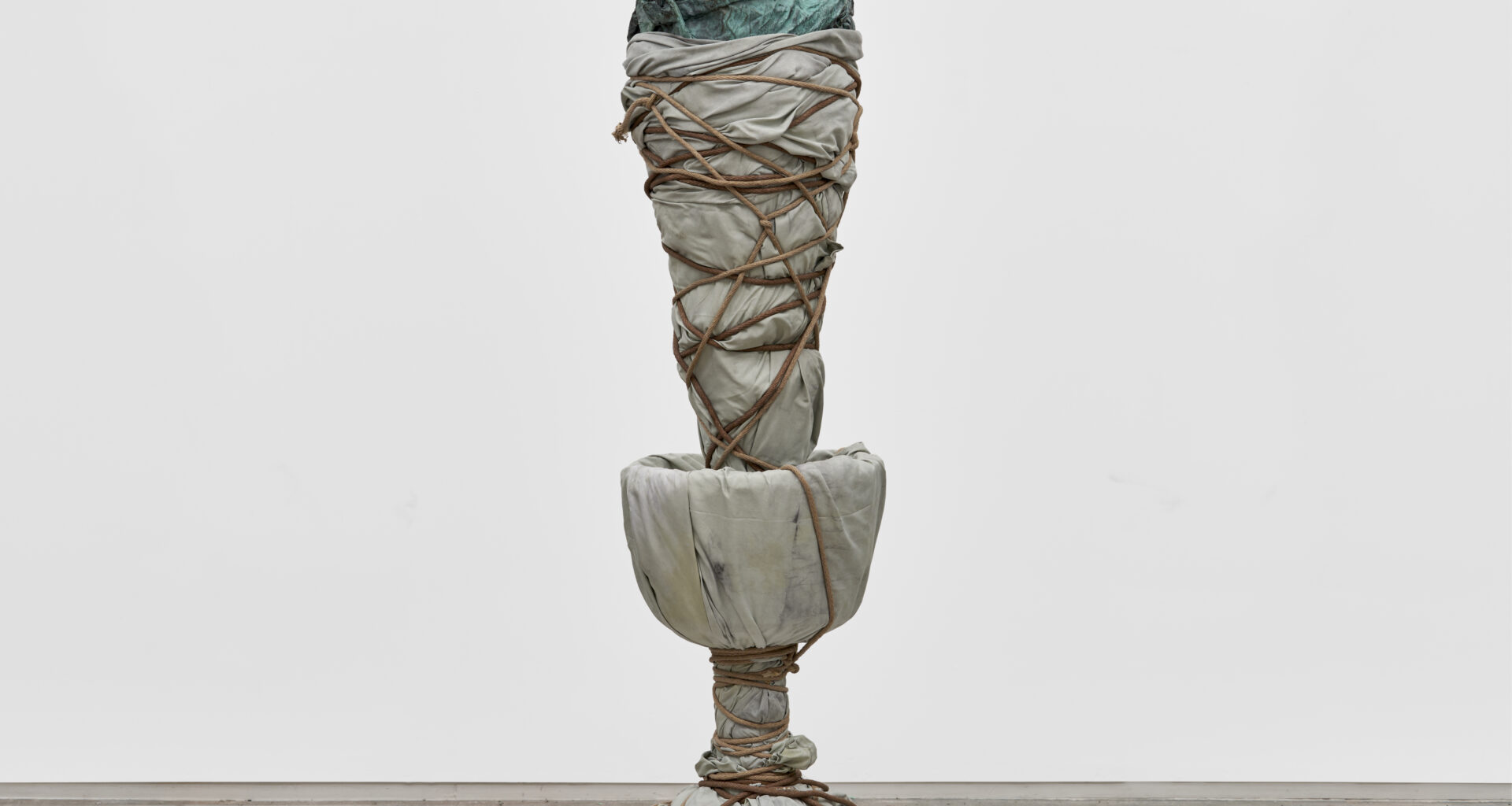I used to be a Mountain
Amanita
September 4–October 19, 2025
New York
All materials come from somewhere, whether this is metal ore from a mine, cotton from a Gossypium plant, or polyester from petrochemicals, which in turn originate from petroleum found deep within the earth’s crust. Alongside Leonardo Meoni’s second solo exhibition in New York, the press materials include a poem by Natasha Belfort Palmeira, from which the title of the exhibition “I used to be a mountain” originates. Placing the poem and artworks side by side is a bit of sleight of hand that favors a soft ontological reading of Meoni’s work that might not be evident at first glance without this bit of nudging. The poem points out that the plethora of things in the world, from paper and language to all manner of objects, arise from the same undifferentiated substance of reality/consciousness. Poetically: the noisy difference of the world, and even the reprieve of silence, were once part of the mountain, a primordial time before difference. The exhibition shows off Meoni’s ongoing experiment with unusual surfaces (steel and velvet) into which he sets perplexing, sometimes threatening, markings and images using grease, his fingers, and presumably some way of fixing the image so it is not accidentally wiped away.
The show stands out for its monumentality, but the wall works (I don’t want to limit them by saying they are paintings) are unassuming. Their texture—what looks like multivalent layers but is in fact just the one felted or oiled surface—poses an interesting problem at a time when digital reproductions are the way art is often viewed. Artworks which are decidedly not photogenic, though nevertheless easy to document, can make for unimpressive images. This is not necessarily bad. When our engagement with art is reduced to the menial, retinal labor of judging images in phone-screen-sized reproduction, it is refreshing to see artworks that are significantly different IRL than they appear online. Experiencing the scale and material surface of Meoni’s artworks is necessary for them to be appreciated, felt, and understood for what they are: at times haunting reveries into obscurantism and proof of the suggestive power of marks on a surface.
In some of his past work on velvet, Meoni impressed photographic images into the felting, though this time, whether the images are drawn from a direct reference is hard to tell. They certainly resemble a collage of things, like trees and the surface of water, as in Telluride (all works 2025) and Rhyolite. But the markings bleed between hand drawn and mechanically produced, as in Howardsville and Blowing Rock. Works in the back room of the gallery, Dirty Machines, On the second surface, and Slight Refusal, which incorporate bleach, captivate in the way that color field paintings often do. Then there are the smudges made with grease on steel sheets: Disegno preparatorio per una scultura I, II, and III. These evoke the artist’s hand to a great extent, and stand as the best examples of works in the show that are difficult to capture photographically.

